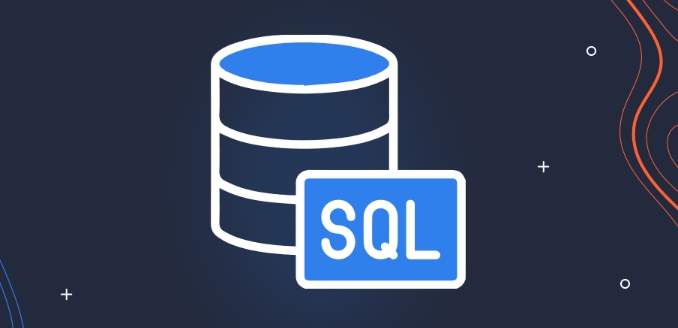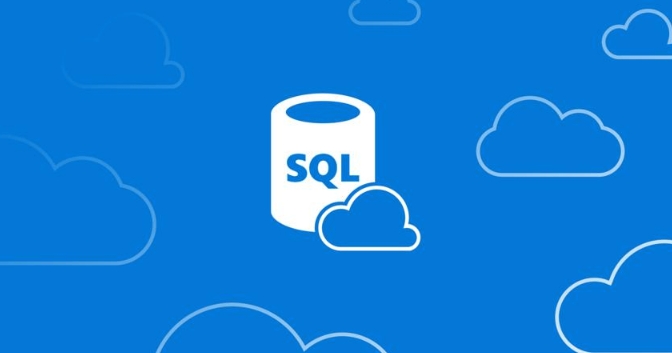Exploring Different Types of Indexes in SQL (Clustered vs Non-Clustered)
Jul 28, 2025 am 03:33 AMClustered and non-clustered indexes differ in how they store and retrieve data. 1. A clustered index determines the physical order of data storage, allows only one per table, and is ideal for range queries and sorted data retrieval. 2. A non-clustered index creates a separate structure pointing to data rows, supports multiple indexes per table, and speeds up lookups on non-sequential columns. 3. Clustered indexes impact performance significantly, so choose carefully—often best on auto-incrementing primary keys. 4. Non-clustered indexes improve query speed for specific filters and joins but consume extra space and slow down writes. 5. Proper indexing strategy should evolve with performance monitoring and adjustment over time.

When it comes to optimizing SQL queries, understanding the different types of indexes—especially clustered and non-clustered—is crucial. The main difference lies in how they store and access data. A clustered index determines the physical order of data in a table, while a non-clustered index is like a separate structure that points back to the data.

Let’s dive into what each one does and when to use them.

What Is a Clustered Index?
A clustered index defines the actual order in which data is stored on disk or in memory. Since data can only be sorted one way physically, a table can have only one clustered index.
- Think of it like a phone book: entries are sorted by last name.
- When you query based on the clustered key (like an
IDcolumn), the database can retrieve the data quickly because it knows exactly where it is.
Use a clustered index on:

- Columns that are frequently used in range queries (
WHERE ID BETWEEN 10 AND 20) - Columns that are often used for sorting (
ORDER BY) - Tables where data is inserted in a sequential manner (like auto-incrementing IDs)
Keep in mind: If your table doesn’t have a clustered index, it’s called a heap, and querying large portions of it can get slow fast.
What About Non-Clustered Indexes?
Non-clustered indexes don’t change how data is stored. Instead, they create a separate structure with pointers back to the actual rows. This makes them ideal for speeding up queries on columns that aren’t part of the clustered index.
- Like an index in a textbook: it tells you where to find something without being the content itself
- You can have multiple non-clustered indexes per table
They’re especially useful for:
- Queries filtering on specific values (e.g.,
WHERE Email = 'user@example.com') - Joins involving foreign keys not covered by the clustered index
- Covering scenarios where all needed data is in the index (no need to go back to the table)
One thing to note: non-clustered indexes take up extra space and can slightly slow down inserts and updates since the index must also be updated.
Clustered vs Non-Clustered: Practical Tips
Here are some real-world tips to help decide between the two:
- Choose the clustered index carefully – It has the biggest impact on performance.
- Primary keys usually get the clustered index by default, but that’s not always best (especially if you have GUIDs).
- Avoid over-indexing – Too many non-clustered indexes can hurt write performance.
- Consider include columns in non-clustered indexes – This helps avoid key lookups when you want to cover more query needs.
Also, remember that in SQL Server, if your clustered index is not unique, the system will add a 4-byte uniqueifier behind the scenes. That might affect storage and performance if you're dealing with duplicate values.
Final Thoughts
Choosing between clustered and non-clustered indexes depends on how your data is accessed. Clustered indexes are powerful for ordered retrieval, while non-clustered ones offer flexibility for faster lookups on secondary columns.
You don't have to get everything perfect right away—start with common sense choices like primary keys, then monitor performance and adjust as needed.
Basically, that's how clustered and non-clustered indexes work in practice.
The above is the detailed content of Exploring Different Types of Indexes in SQL (Clustered vs Non-Clustered). For more information, please follow other related articles on the PHP Chinese website!

Hot AI Tools

Undress AI Tool
Undress images for free

Undresser.AI Undress
AI-powered app for creating realistic nude photos

AI Clothes Remover
Online AI tool for removing clothes from photos.

Clothoff.io
AI clothes remover

Video Face Swap
Swap faces in any video effortlessly with our completely free AI face swap tool!

Hot Article

Hot Tools

Notepad++7.3.1
Easy-to-use and free code editor

SublimeText3 Chinese version
Chinese version, very easy to use

Zend Studio 13.0.1
Powerful PHP integrated development environment

Dreamweaver CS6
Visual web development tools

SublimeText3 Mac version
God-level code editing software (SublimeText3)

Hot Topics
 How to use IF/ELSE logic in a SQL SELECT statement?
Jul 02, 2025 am 01:25 AM
How to use IF/ELSE logic in a SQL SELECT statement?
Jul 02, 2025 am 01:25 AM
IF/ELSE logic is mainly implemented in SQL's SELECT statements. 1. The CASEWHEN structure can return different values ??according to the conditions, such as marking Low/Medium/High according to the salary interval; 2. MySQL provides the IF() function for simple choice of two to judge, such as whether the mark meets the bonus qualification; 3. CASE can combine Boolean expressions to process multiple condition combinations, such as judging the "high-salary and young" employee category; overall, CASE is more flexible and suitable for complex logic, while IF is suitable for simplified writing.
 How to create a temporary table in SQL?
Jul 02, 2025 am 01:21 AM
How to create a temporary table in SQL?
Jul 02, 2025 am 01:21 AM
Create temporary tables in SQL for storing intermediate result sets. The basic method is to use the CREATETEMPORARYTABLE statement. There are differences in details in different database systems; 1. Basic syntax: Most databases use CREATETEMPORARYTABLEtemp_table (field definition), while SQLServer uses # to represent temporary tables; 2. Generate temporary tables from existing data: structures and data can be copied directly through CREATETEMPORARYTABLEAS or SELECTINTO; 3. Notes include the scope of action is limited to the current session, rename processing mechanism, performance overhead and behavior differences in transactions. At the same time, indexes can be added to temporary tables to optimize
 How to get the current date and time in SQL?
Jul 02, 2025 am 01:16 AM
How to get the current date and time in SQL?
Jul 02, 2025 am 01:16 AM
The method of obtaining the current date and time in SQL varies from database system. The common methods are as follows: 1. MySQL and MariaDB use NOW() or CURRENT_TIMESTAMP, which can be used to query, insert and set default values; 2. PostgreSQL uses NOW(), which can also use CURRENT_TIMESTAMP or type conversion to remove time zones; 3. SQLServer uses GETDATE() or SYSDATETIME(), which supports insert and default value settings; 4. Oracle uses SYSDATE or SYSTIMESTAMP, and pay attention to date format conversion. Mastering these functions allows you to flexibly process time correlations in different databases
 What is the purpose of the DISTINCT keyword in a SQL query?
Jul 02, 2025 am 01:25 AM
What is the purpose of the DISTINCT keyword in a SQL query?
Jul 02, 2025 am 01:25 AM
The DISTINCT keyword is used in SQL to remove duplicate rows in query results. Its core function is to ensure that each row of data returned is unique and is suitable for obtaining a list of unique values ??for a single column or multiple columns, such as department, status or name. When using it, please note that DISTINCT acts on the entire row rather than a single column, and when used in combination with multiple columns, it returns a unique combination of all columns. The basic syntax is SELECTDISTINCTcolumn_nameFROMtable_name, which can be applied to single column or multiple column queries. Pay attention to its performance impact when using it, especially on large data sets that require sorting or hashing operations. Common misunderstandings include the mistaken belief that DISTINCT is only used for single columns and abused in scenarios where there is no need to deduplicate D
 What is the difference between WHERE and HAVING clauses in SQL?
Jul 03, 2025 am 01:58 AM
What is the difference between WHERE and HAVING clauses in SQL?
Jul 03, 2025 am 01:58 AM
The main difference between WHERE and HAVING is the filtering timing: 1. WHERE filters rows before grouping, acting on the original data, and cannot use the aggregate function; 2. HAVING filters the results after grouping, and acting on the aggregated data, and can use the aggregate function. For example, when using WHERE to screen high-paying employees in the query, then group statistics, and then use HAVING to screen departments with an average salary of more than 60,000, the order of the two cannot be changed. WHERE always executes first to ensure that only rows that meet the conditions participate in the grouping, and HAVING further filters the final output based on the grouping results.
 Defining Database Schemas with SQL CREATE TABLE Statements
Jul 05, 2025 am 01:55 AM
Defining Database Schemas with SQL CREATE TABLE Statements
Jul 05, 2025 am 01:55 AM
In database design, use the CREATETABLE statement to define table structures and constraints to ensure data integrity. 1. Each table needs to specify the field, data type and primary key, such as user_idINTPRIMARYKEY; 2. Add NOTNULL, UNIQUE, DEFAULT and other constraints to improve data consistency, such as emailVARCHAR(255)NOTNULLUNIQUE; 3. Use FOREIGNKEY to establish the relationship between tables, such as orders table references the primary key of the users table through user_id.
 What is a sequence object in SQL and how is it used?
Jul 02, 2025 am 01:21 AM
What is a sequence object in SQL and how is it used?
Jul 02, 2025 am 01:21 AM
AsequenceobjectinSQLgeneratesasequenceofnumericvaluesbasedonspecifiedrules,commonlyusedforuniquenumbergenerationacrosssessionsandtables.1.Itallowsdefiningintegersthatincrementordecrementbyasetamount.2.Unlikeidentitycolumns,sequencesarestandaloneandus
 Key Differences Between SQL Functions and Stored Procedures.
Jul 05, 2025 am 01:38 AM
Key Differences Between SQL Functions and Stored Procedures.
Jul 05, 2025 am 01:38 AM
SQLfunctionsandstoredproceduresdifferinpurpose,returnbehavior,callingcontext,andsecurity.1.Functionsreturnasinglevalueortableandareusedforcomputationswithinqueries,whileproceduresperformcomplexoperationsanddatamodifications.2.Functionsmustreturnavalu






